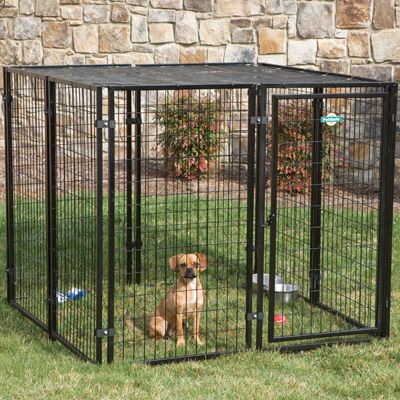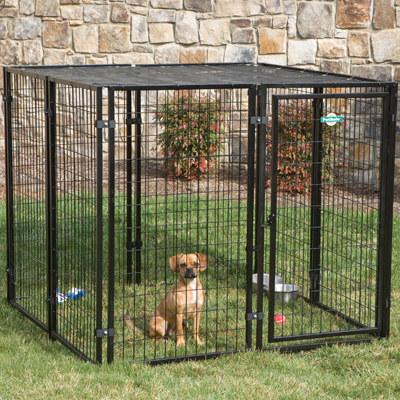Crate training is based on the ancestral behavior of dogs. Dogs are den animals who sought out secure, clean, semi-darkened nesting spaces away from all distractions and potty areas. Many professional trainers believe that crate training is the easiest and most natural way to house train a new puppy.
 A Safe Haven
A Safe Haven
The crate provides a safe, secure environment for your dog, particularly when you can't be at home. Once your dog gets used to his crate, he'll begin to view it as a room of his own and take great comfort from it. In fact, dogs that are crate trained tend to go to their crates whenever they are faced with a stressful situation, such as visiting children or extra activity in the home.
Crate training can be accomplished with a dog of any age. The dog will need a proper introduction to the crate that includes praise and rewards, all part of making the crate a desirable place to be. It may take some time for your dog to warm up to using the crate - and it may also require a healthy dose of patience on your part - but all dogs can be brought around to accept the crate as a comfortable and safe place to spend time.
Easy, Fast, and Safe
Many aspects of training your dog are made easier with crate training.
- Housebreaking your puppy can go much faster when you use a crate. Since canines naturally avoid soiling their den, you can use the crate to motivate your pet to wait until he is taken outside.
- Destructive chewing becomes easier to control. He can't chew on shoes or furniture while he is in his crate, but he can chew on the toys you choose to give him.
- Traveling is safer when your pet is in a crate. You can travel without running the risk of him getting lost or interfering with safe driving.
Safety Tips
Like with every form of training, it's important to follow some do's and don'ts that will help preserve your pet's health and safety.
- Make sure the crate is the right size. A crate that is too small may cause your pet to become claustrophobic and afraid. A crate that is too large may tempt your pet to use one end as an area for elimination.
- Choose a crate that allows your pet to stand comfortably, turn, and sprawl.
- Do not leave unsupervised pups with small toys or rawhide chew bones, as they can easily choke on them.
- The amount of time a puppy spends in the crate is extremely important. Puppies have poor bladder and bowel control and should not spend more than four or five hours in the crate at a time, with the exception of sleeping in the crate at night.
- Never crate a dog wearing a choke collar, as they could choke themselves to death.
More Resources



